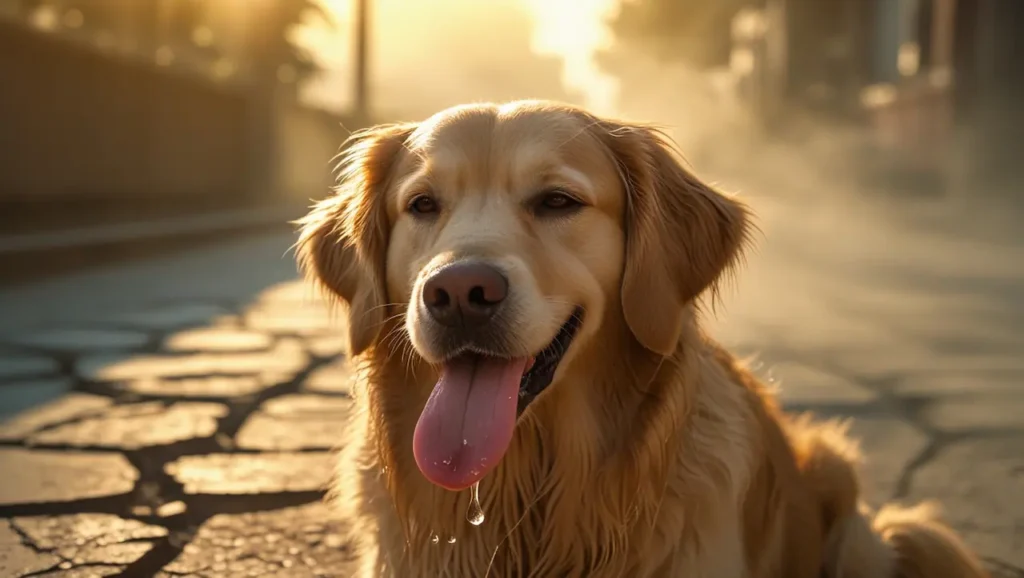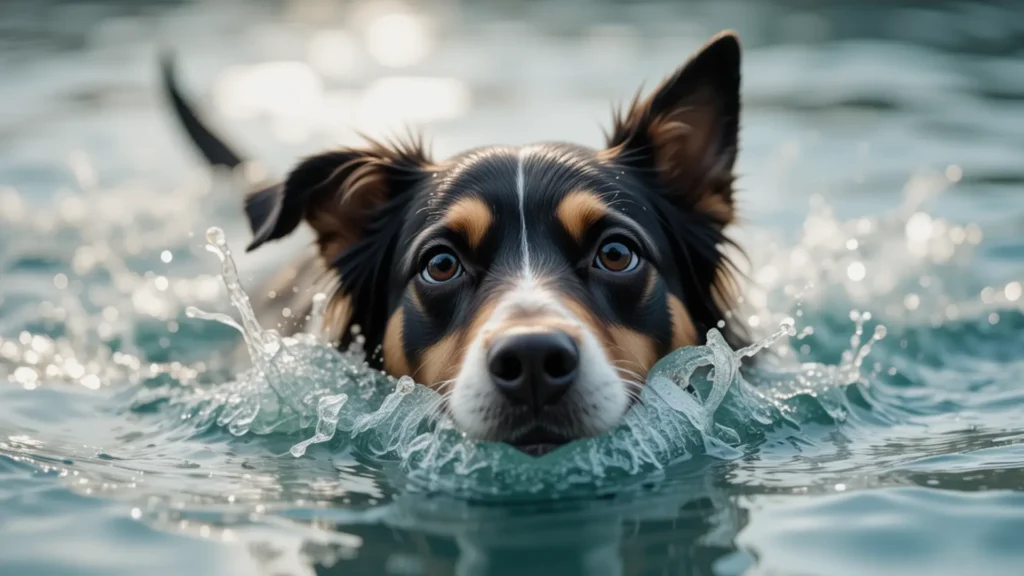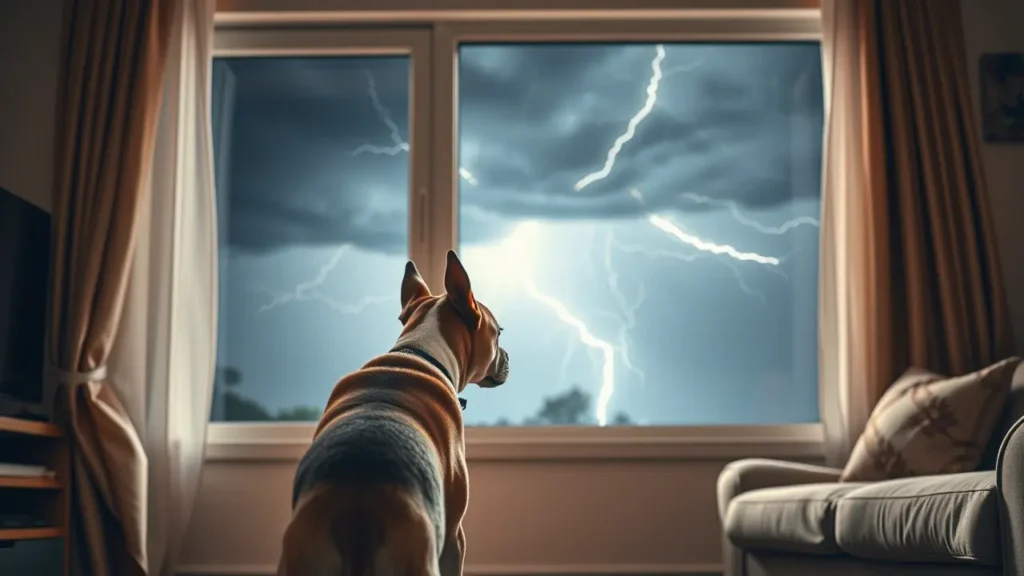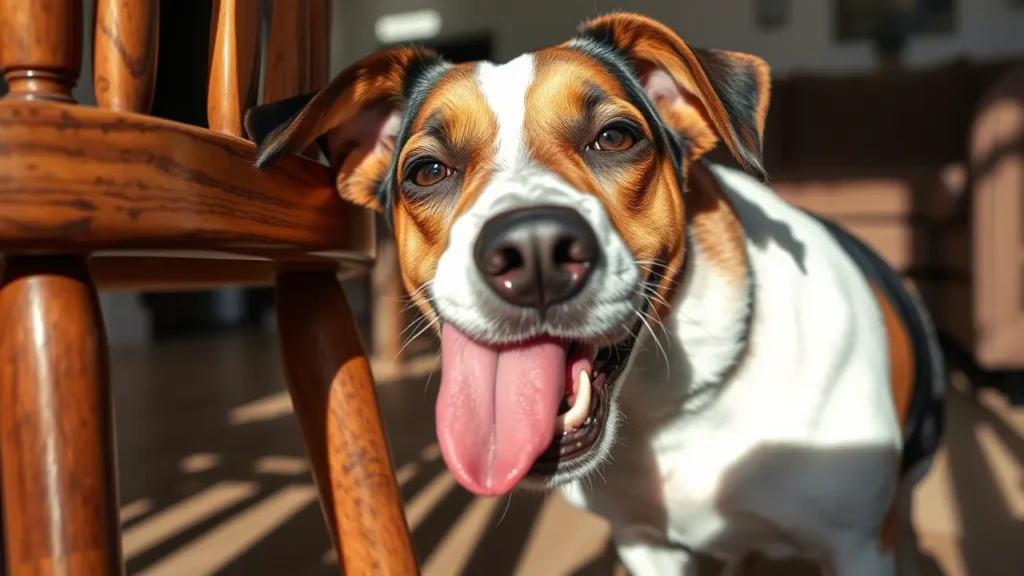Excessive drooling in dogs, also known as hypersalivation, is a common concern among pet owners. The causes of excessive drooling can vary widely. Understanding the potential triggers and knowing when to seek veterinary attention can make a significant difference in your dog’s well-being.
This guide explores the possible causes of excessive drooling, symptoms to watch for, and steps you can take to address the issue.
Causes of Excessive Drooling in Dogs
Oral or Dental Issues for Drooling
Dental problems impact oral health and well-being of dogs significantly.
Tooth decay occurs when bacteria break down the enamel of the teeth. It causes pain, infection, and discomfort. Gingivitis is caused by plaque buildup. This results in redness, swelling, and bleeding gums.
An abscess is a localized infection. It usually happens around the root of a tooth, which leads to pus accumulation and swelling. VCA Animal Hospitals suggest that, “A persistent infection can result in an abscess (an accumulation of pus) that may leak directly into the oral cavity or may leak out onto the skin (beneath the chin if the affected root is in the lower jaw or onto the face if the affected root is in the upper jaw).”
These dental issues cause significant pain and irritation for your dog. It makes the process of eating, chewing and grooming difficult. The discomfort also leads to behavioral changes. Dogs lose their appetite and reluctant to eat hard food.
The pain and inflammation in the mouth trigger excessive salivation. Drooling is a common side effect of the dental problems.
Bones, sticks, and pieces of toys lodged in the mouth can irritate the gums or throat and result in hypersalivation and drooling.
Mouth ulcers and oral tumors also cause drooling. They accompany bad breath and difficulty eating. Contact the veterinarian promptly when this happens.
Nausea Causes Drooling in Dogs
Dogs often drool excessively when they feel nauseous. Just like humans, dogs experience discomfort due to the movement of running vehicle. This leads to dizziness and upset stomach. This result in increased salivation, along with other signs such as pacing, whining, and reluctance to get into the car.
Monroe Veterinary Clinic explains that, “Nausea includes gastrointestinal (GI) issues, vestibular (balance) issues and motion sickness. When a dog is nauseated, his salivary glands go into overdrive and he drools.”
Ingesting spoiled food, trash, and non-food items irritate dogs’ stomach. When a dog eats these items, he feels discomfort and nausea. Sometimes, bacteria or viruses invade the gastrointestinal tract, leading to inflammation and nausea. Nausea increases the probability of drooling in dogs.
Heatstroke is Another Reason
South Seattle Veterinary Hospital explains that, dogs do not regulate their body temperature as humans. For doing this, they primarily rely on panting or drooling to cool down. They added, “One of the first signs of heatstroke in dogs is excessive drooling, which can be a desperate attempt by the dog’s body to cool itself down. Canine bodies, unlike humans, don’t sweat to regulate body temperature. Instead, dogs pant and drool to dissipate heat and cool their bodies.”
Without proper hydration and cooling, a dog shows signs of heat stress. Body temperature above 104°F (40°C) causes heatstroke in dogs. Dogs become lethargic, weak, or disoriented for overheating.
When heatstroke happens, move the dog to a cooler area. Provide small sips of cool (but not ice-cold) water to help them rehydrate. Use cool, wet towels and a fan to help lower their body temperature.
Seeking veterinary care is essential. A vet will monitor the dog for potential complications. Intravenous fluids, medications, and other treatments may be necessary to stabilize the dog.
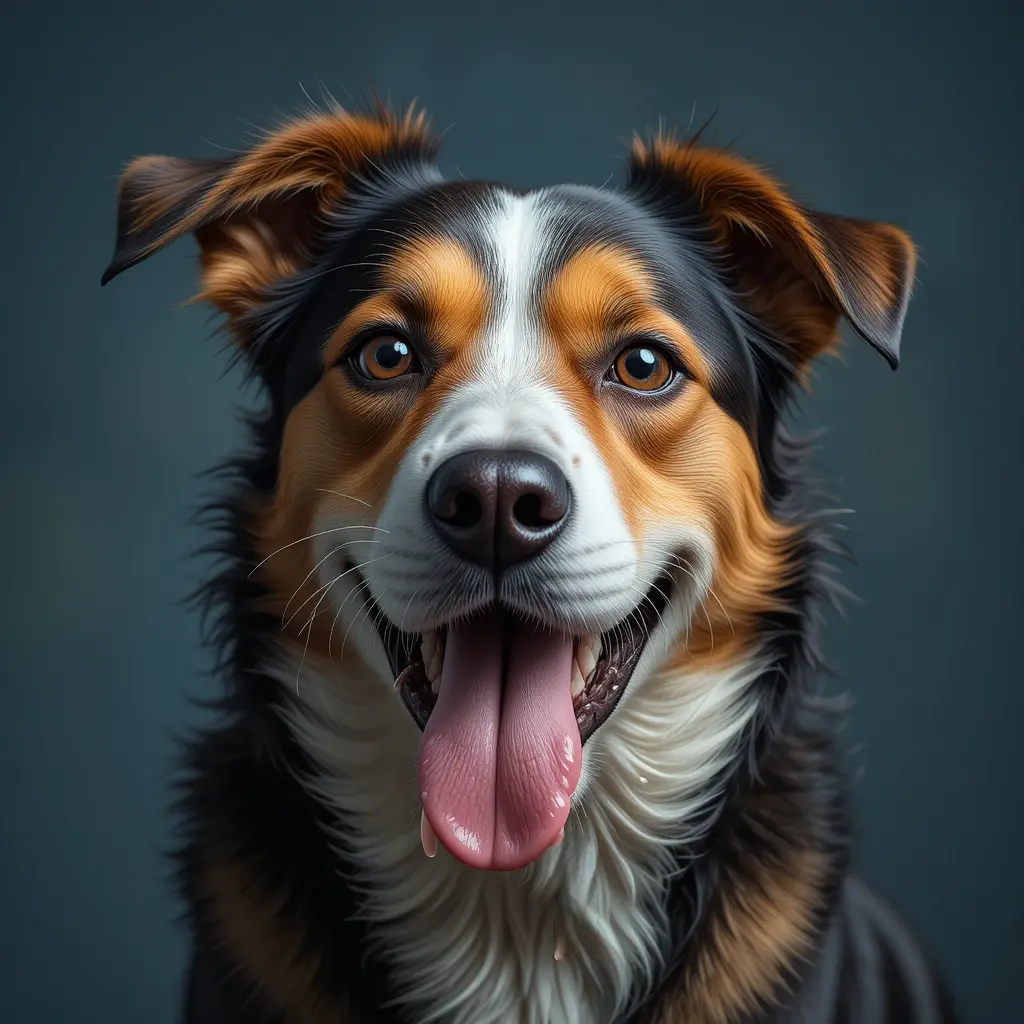
Poisoning or Toxin Exposure
Common household items, plants, and human foods are hazardous to dogs. These create irritation to the mouth, digestive system, and internal organs. The Spruce Pets explains that, “Many dogs will experience irritation of the mouth after eating or chewing on something toxic. This is especially common after a dog nibbles on a poisonous plant or tastes a toxic chemical.”
These toxins trigger excessive drooling. The drooling results from the irritation or burning sensations in the mouth and throat caused by the harmful substance. Bottletree Animal Hospital support the idea. They explain that, “If your dog has been exposed to household chemicals, you may notice symptoms such as excessive drooling, vomiting, and difficulty breathing.”
Some common toxins that dogs may encounter include:
Antifreeze: A highly toxic substance found in vehicles.
Cleaning products: Household cleaning products, such as bleach, ammonia, and disinfectants, contain chemicals that can burn the mucous membranes of the mouth, throat, and stomach.
Plants: Certain plants like lilies, sago palms, and azaleas are known to be toxic to dogs. Ingesting small portions of these plants can cause severe poisoning.
Human foods: Some foods that are safe for humans can be extremely dangerous for dogs. Chocolate contains theobromine, can be poisonous to dogs, while xylitol, a sugar substitute, can cause a rapid drop in blood sugar and liver failure. Grapes and raisins can cause kidney failure in some dogs.
Keep your dogs away from these items.
Anxiety and Stress for Specific Environments
Fear and stress sometimes cause excessive drooling. These emotional reactions activate the dog’s nervous system, and change their salivation.
Some common situations that might cause drooling in dogs include:
Visiting the vet: The unfamiliar environment, strange smells, and handling by strangers can cause them to drool excessively.
Thunderstorms: The loud noises, flashing lights, and sudden changes in weather conditions trigger anxiety in dogs. Dogs that are sensitive to thunderstorms exhibit signs of fear, and drool.
Meeting new people or animals: Dogs who are not accustomed to meeting strangers feel nervous sometimes. Drooling occurs as part of their stress response.
Traveling: Long journey on cars can lead to drooling as a result of motion sickness or stress.
The drooling typically resolves once the dog is in a calmer environment or when the stressful situation has passed. You can reduce this type of drooling by behavior training, calming aids and positive responses.
Neurological Problems Cause Dogs to Drool
Neurological issues significantly impact a dog’s ability to saliva production and swallowing. These issues interfere with the normal control over their mouth and throat muscles. Abnormal control causes drooling and hypersalivation.
Some of the common neurological conditions that can cause drooling in dogs include:
Seizures: Seizures are caused by abnormal electrical activity in the brain. During or after a seizure, a dog experiences excessive salivation due to a lack of control over their mouth muscles.
Facial Nerve Paralysis: When facial nerve becomes damaged, it causes one side of the dog’s face to become paralyzed. The inability to fully close the mouth leads to drooling, as saliva is not properly swallowed.
Seek immediate veterinary attention immediately. The underlying neurological condition must be diagnosed and treated promptly.
Your vet may suggest anti-seizure medications and lifestyle changes for seizure treatment.
Facial nerve paralysis might be resolved over time with supportive care.
Vestibular disease improves with time. In some cases, medications may be prescribed to help with nausea, dizziness, or inflammation.
Drooling Happens due to Infections
Rabies primarily affects the nervous system. The excessive drooling in rabies-infected dogs is typically a result of difficulty swallowing due to inflammation in the throat and mouth. As the disease progresses, the dog’s ability to swallow saliva diminishes. Rabies leads to drooling.
Tonsillitis is the inflammation of the tonsils. The inflammation stimulates the production of excess saliva. Dogs with tonsillitis avoid eating and drinking due to the discomfort in their throat.
Pharyngitis is caused by bacterial or viral infections. It leads to drool and makes swallowing difficult and painful.
Consult a veterinarian if your dog is experiencing excessive drooling due to infection.
Tonsillitis and Pharyngitis can be treated with antibiotics if bacterial infection is present. Pain relief, anti-inflammatory medications, and supportive care may also be recommended.
Salivary Gland Abscesses treatment may involve draining the abscess, administering antibiotics, and performing surgery to remove the affected gland if necessary.
Breed-Specific Drooling
Certain dog breeds, with loose jowls and unique lip structures, are naturally prone to drooling due to their anatomy. These breeds are known for excessive drooling.
Saint Bernards: Known for their large size and distinctive broad heads. Their loose lips and drooping jowls create the perfect environment for saliva to pool.
Bloodhounds: These dogs have long ears and jowls. Their drooling increases when they are excited or during scent tracking.
Mastiffs: The Mastiff breed has large, heavy jowls that naturally droop. While drooling is typical, it can be more pronounced during meals.
Newfoundlands: Newfoundlands tend to drool more due to their large heads and loose skin around their mouths.
Drooling is normal for these breeds. If drooling accompanies vomiting, lethargy, difficulty eating, and behavioral changes, it is important to consult a veterinarian.
What You Should Do to Prevent Excessive Drooling
Observe the Symptoms: Watch your dog carefully for additional signs that may indicate the cause of drooling, such as lethargy, vomiting, gagging, or bad breath. Check your dog’s mouth for obvious issues like injuries, foreign objects, and unusual growths.
Immediate Veterinary Attention: Seek urgent care if your dog shows signs of poisoning, heatstroke, neurological symptoms, or has trouble breathing. Persistent drooling lasting more than 24 hours should be evaluated by a vet.
At-Home Care: For mild nausea or motion sickness, keep your dog comfortable, and calm. Provide your dog plenty of fresh water. Avoid giving them food or treats that might further irritate their stomach.
Preventive Measures: Ensure your dog has access to shade, fresh water, and never leave them in hot environments. Keep household toxins, medications, and dangerous foods out of reach. Regularly clean your dog’s teeth and gums or schedule professional dental cleanings to avoid oral health problems.
Excessive drooling in is worth watching. Observing your dog’s behavior, and check for symptoms. Take preventive measures.
Consult your veterinarian when necessary. A prompt and accurate diagnosis can ensure that your dog receives the care they need to stay healthy.

